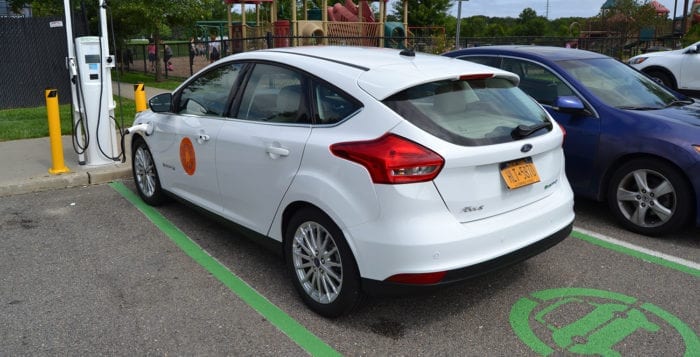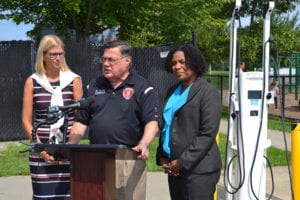By Nancy Marr
Many of us are concerned, and puzzled, about the effect of climate change on our weather. Why is it happening and what can we do about it? Greenhouse gas emissions have been increasing as our countries use more power. They blanket the Earth, trapping the sun’s heat in the atmosphere. This leads to changing weather patterns and disruption of the usual balance of nature, posing many risks to human beings and all other forms of life on Earth. Fossil fuels — coal, oil and gas — are by far the largest contributors to global climate change, accounting for over 75 percent of global greenhouse gas emissions and nearly 90 percent of all carbon dioxide emissions.
In 2019, New York State passed the Climate Leadership and Community Protection Act, based on projections by NYSERDA (New York State Climate Impacts Assessment: Understanding and Preparing for our Changing Climate.) The act presents the state with a strategy for taking action, reducing our carbon footprint, making our communities more resilient, and creating the opportunity for citizens and communities to partner with businesses, schools and government to create a green economy. The goal for New York for 2030 is a reduction of 40% from 1990 levels by 2030 and a reduction of 85% by 2050.
Led by the Climate Action Council, New York State agencies are required to follow the mandates of the Climate Act (CLCPA). The Council will focus on specific sectors —energy efficiency and building electrification, clean transportation, transmission to support offshore wind injections to the electric power system, and renewable energy technologies. It can provide funding and technical assistance to implement energy and transmission programs that reduce greenhouse gas use, grant-funding to support community-based organizations to develop local land-use plans to guide development to reduce emissions, adapt to climate change, and achieve a just transition.
Support for Smart Growth planning can accelerate mixed-use, mixed-income Transit Oriented Developments around key transit hubs served by rail and bus rapid transit.
An analysis released by the U.S. Environmental Protection Agency (EPA) in 2021 showed that the most severe harms from climate change fall disproportionately upon underserved communities which are least able to prepare for and recover from heatwaves, poor air quality, flooding, and other impacts. Racial and ethnic minority communities are particularly vulnerable to the greatest impacts of climate change.
The Climate Act requires that disadvantaged communities be identified by the Climate Justice Working Group based on geographic, public health, environmental hazard, and socioeconomic criteria. Thirty-five percent of funding should be used to target efforts in disadvantaged and underserved areas.
Investment in the Climate Change plans will show benefits in addition to the reduction of global warming; in public health, decarbonization can result in improvements in ambient air quality, energy efficiency and weatherization programs in low and moderate homes. Energy efficient and end-use electrification through heat pumps and electric vehicles and funding for school districts to purchase electric buses and their charging stations will be available. Protection of New York’s forests and planting of new trees for large-scale carbon sequestration may be recommended to reduce the emissions.
The Climate Act is directed to our state’s efforts to replace fossil fuel use with renewable energy. It also considers ways to moderate some of the inequities between the communities that we live in. Our participation as community residents can support the efforts of the state, particularly in the area of waste, which is an important source of methane when collected in landfills or open fields.
Recycling can re-use some of the waste, but only residents can reduce the amount that they discard by finding ways to reduce how much they acquire. We have a choice about the vehicles we drive, often choosing larger vehicles than we need, and we make choices about how to travel, electing air travel rather than trains. Planning for walkability in our communities would reduce the fumes of gasoline and encourage walking and bicycling. We can influence community planning decisions; do we always think about how our ideas support actions that protect rather than damage our communities?
Nancy Marr is first vice-president of the League of Women Voters of Suffolk County.







